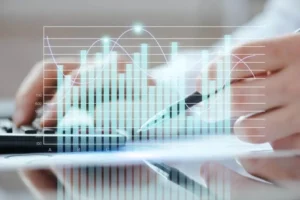Luara Rezende, thelawyer at Marcos Martins Advogados.
In recent weeks, the topic on the rise has been the request for judicial recovery carried out by Grupo Americanas and its developments, with various analyzes on the sudden decision, since the company of more than 100 years, with a solid reputation in the retail market, overnight, it declared that it had more than 40 billion reais in debt and a lack of liquidity to pay it.
Following this decision, numerous reports and articles were written about this company’s relations with banks and suppliers, in addition to possible fraud and the need for investigations, and a closer look at labor issues was also necessary.
According to information extracted from the process distributed under number 0803087-20.2023.8.19.0001, in the 4th Business Court of the District of Rio de Janeiro, the request for judicial recovery was made by the companies Americanas S.A., B2W Digital Lux S.À. R.L, JSM Global S.À.R.L and ST Importações Ltda., all members of the “Grupo Americanas”.
Consolidated in 2022 as one of the largest retail chains in Brazil, with more than 3,600 establishments spread across the country, the group created Americanas Entrega and combines digital platforms (with the brands Americanas, Submarino, Shoptime and Soub!), physical locations of operation ( with Lojas Americanas traditional, express, local, digital and AME Go), franchises (Imaginarium, MinD, Puket and LoveBrands), fulfillment, fintech (AME Digital), retail specializing in fruits and vegetables (Hortifruti Natural da Terra), advertising and the innovation platform. (excerpt from the initial petition)
Thus, in all its areas of activity, Grupo Americanas generates more than 100 thousand direct and indirect jobs and, with the filing of the request for judicial recovery, it was considered the fourth largest in the country, < strong>with a preliminary debt declared at R$43 billionand later adjusted to aroundR$47 billion.
After the preliminary procedures, the group presented a list of around 320 labor creditors – Class I, totaling a liability of approximately R$65 million for this category.
However, according to the petition presented by the appointed judicial administrators, there is news that the business group has more than 17 thousand labor actions filed nationwide, and the tiny list presented is worrying, as it could lead to an increase substantial amount of the declared liability, in addition to late credit qualifications with slow legal provision, as there is fear of a flood of distributions incidental to the judicial recovery process.
It is important to highlight that in 2021 there was a provision for social security and labor liabilities in the amount of R$114 million, which may suggest that the value presented by companies is lower. In any case, this information can only be confirmed with the steps requested by the administrators, through cooperation between the Court of Justice and the Regional Labor Court of the 1st Region (RJ), with a request for extension to the other Labor Courts, with the aim of sharing information about the actions distributed within their competences, indicating procedural phases and estimated values.
It is true that the request for judicial recovery aims, under the terms of article 47 of Law 11,101/2005, as amended by Law 14,112 of 2020, to enable the debtor’s economic-financial crisis to be overcome, in order to allow maintenance of the production source, the employment of workers and the interests of creditors, thus promoting the preservation of the company, its social function and the stimulation of economic activity.
Therefore, in the case of a conglomerate of national relevance, it is extremely important that all efforts are made so that the group reorganizes its debts and continues its business operations, preserving jobs and contributing to the country’s economy, thus performing its social role.
For this to occur, it is provided in the legislation that the request for judicial recovery impliesI) suspension of the course of prescription of the debtor’s obligations subject to the regime of this Law; II) suspension of executions filed against the debtor, including those of private creditors of the joint partner, relating to credits or obligations subject to judicial recovery or bankruptcy; III) prohibition of any form of retention, arrest, attachment, kidnapping, search and seizure and judicial or extrajudicial constriction of the debtor’s assets, arising from judicial or extrajudicial demands whose credits or obligations are subject to judicial recovery or bankruptcy.
In other words, the company gets “a breath of fresh air” to reorganize itself and present a payment plan for debts incurred up to the date of the judicial recovery request, so that debts constituted after the judicial recovery request (including severance pay, arising from of contractual terminations made after the RJ plan), will be considered extra-competitive credits and, therefore, not subject to payment according to the plan to be voted on and approved.
Thus, all labor actions filed up to the date of the request for judicial recovery become a bankruptcy credit and must be settled in accordance with the terms of the recovery plan that will be voted on by the creditors indicated and qualified in that procedure and, in the end, approved by the court.
Regarding actions filed after the request for judicial recovery, an analysis must be carried out to understand the type of credit, whether competitive, extra-competitive or hybrid. This analysis will be carried out in the settlement phase and will consider the date of the event generating the amount due. This means that, if the amount granted in the process originates from a date prior to the request, it will be considered as a competitive credit and, therefore, must be paid in accordance with the recovery plan.
Still with regard to labor actions, it is worth noting that processes that are not yet in the execution phase continue to be processed in the Labor Court. What will change is that, after the decision to approve the value determined in the process, a certificate must be issued to qualify the credit in the judicial recovery process. Upon qualification, the amounts will be checked by the judicial administrator, company and approved by the judge, starting the payment period, as established in the judicial recovery plan.
Therefore, it is extremely important that Labour courts are aware of judicial recovery, in order to conduct processes in accordance with theBankruptcy and Judicial Recovery Law, avoiding privileged treatment of creditors and restrictive orders that can generate devastating financial impacts, compromising the recovery plan, ultimately leading to the company being declared bankrupt.
On the other hand, the company will need to be aware that labor obligations remain with the request for judicial recovery, as well as that the strategy that will be presented as a means of recovery must comply with art. 50 of the Bankruptcy Law, as well as CLT and other applicable provisions.
In any case, it is important to note that the request for judicial recovery does not remove the company’s management power, delegating to the judicial administrator and recovery court only the monitoring of compliance with the plan. Therefore, any and all decisions to face the crisis must be taken by the corporation itself.
It is true that in the judicial recovery plan there is a chapter dedicated to the means of recovery, that is, the actions that will be adopted so that the company reaches a healthy financial level. This topic is important as it will demonstrate that business continuity is possible and, therefore, there is a possibility of company recovery. However, it must be considered that only the proposal for payment of the debt was deliberated by the creditors, with no vote on the form of business continuity.
Thus, as measures to face the crisis, the group may opt to lay off workers, reduce working hours and salaries, lay off, sell UPIs with transfer of employees, in short, there are countless possibilities that will be defined according to upcoming events and investigations by judicial administrators.
What is already known is the closure of the telesales operation, with the dismissal of some workers. In these cases, it is important to highlight that severance pay does not form part of the general list of creditors and must be paid within the deadline set out in the CLT. In any case, there is the possibility of negotiating with the category union for deferred payment of assets.
In any case, what is expected is that everyone is aware that for a judicial recovery of this magnitude to be successful, creditors, supervisory bodies, representative classes of workers and the judiciary will need to work in synergy, always thinking about maintaining economic activity in order to enable the continuity of jobs, as well as payment of labor credits.








